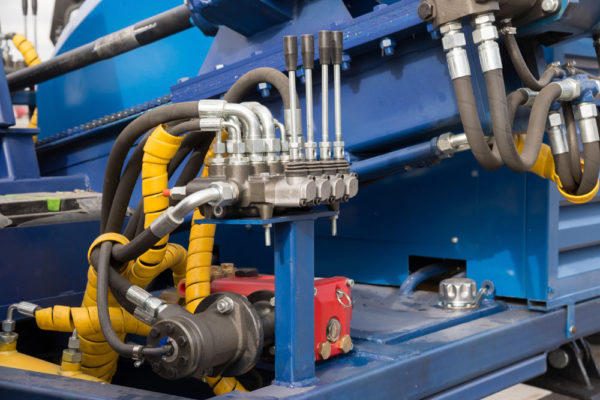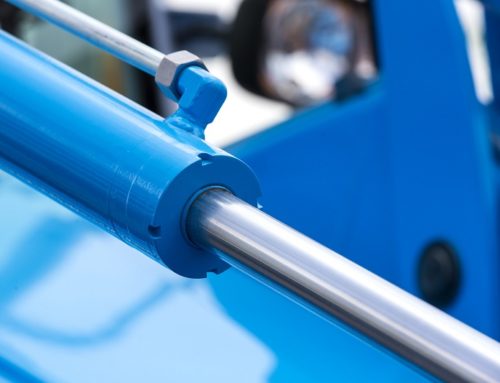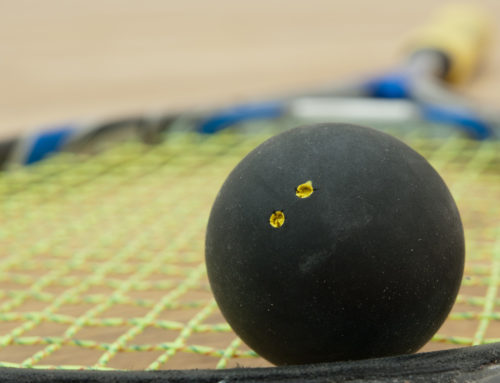If you’re using hydraulic hoses to help you run your business, be aware that, while they’re effective, there are possibilities for things to go wrong. One tiny leak can mean a catastrophe for your business. We’re going to show you how to stop it.
Still, hydraulic hoses offer countless benefits to businesses. They’ve helped many people grow their business and are popular in a variety of industries. Of course, nobody’s perfect – and hydraulic hoses are no exception.
Here, we’re sharing the top 9 reasons hydraulic hoses fail, so you can take preventative action today. If you need to repair your hoses, make sure you act fast to prevent further damage.
1. Heat causes aging
It’s easy for a hose to accidentally become overheated, stiffen, and potentially even catch fire – which can have deadly consequences.
Basically, as the temperature rises, the plastic inner tube will begin to crack. You may even, at times, be able to hear your hydraulic hoses cracking!
To stop this, make sure that your hose can withstand the temperatures you need it to before installation. You may also consider picking up some heat guards.
2. Poor assembly
Sometimes, during the installation process of your hose, if you’re cutting it to fit, debris can get lodged inside the hose itself.
Of course, if you don’t dislodge the debris, it can cause serious problems to your whole system. It may also fracture your hose, which can lead to leaks.
Always makes sure that your hose and the tube are totally clean before you insert your fittings. Also, always cap your ends so you can avoid additional contamination if you need to move your hoses.
3. Poor depth of insertion
If you’re not assembling your hydraulic hoses properly, serious damage can occur. Always make sure that your fittings are completely pushed in so that you’re hitting the recommended depth.
If you don’t do this, it’s possible that the fitting could blow off your hose, which could destroy your entire system.
To avoid this, consider getting a professional installation, and always look into monitoring services.
4. Failure to meet the minimum bend radius
Sometimes, the tube and its cover can tear through the hose if it’s bent too far or not far enough, shutting down the effectiveness of the hose and creating a safety hazard.
Even if the hose looks flat in some places, you could still be looking at a minimum bend radius error, meaning that the flow will be seriously cut off.
To avoid this, always change your routing if necessary, and make sure that you’re complying with the bend radius that’s suggested.
5. Your fluid is incompatible with your tube
Incompatibility is everywhere – these days, it’s even in your hydraulic hoses. This can make your hose’s inside deteriorate very quickly, or simply swell up and become clogged.
When you’re deciding on the type of tube you’re going to purchase, make sure that not only the hose, but also the fittings, O-rings, and outer cover will work with your fluids – especially if they may come into contact with chemicals.
6. Your routing is off
Sometimes, your hydraulic hose problems have nothing to do with the fluid or the hose itself, and more to do with the path you’ve selected.
Always make sure that, during the installation process, you’ve carefully placed clamps to help (gently!) direct the flow, and that you’ve created safe passage for pivot points in particular.
You may also want to consider picking up protective sleeves for your hoses, especially if they’re routing is a little out of the ordinary.
7. Your tube has been eroded
If your hose has particles in the fluid, or too high of a fluid speed going through it, tube erosion can and will happen fast.
Always make sure that, at the start, you’re buying the right size of hose for the speeds of your flow. Make sure, too, that your band isn’t overly tight and that the inside of the tube is strong enough to handle the type of liquid that will run through it.
8. Old, trapped air
We know: maybe you never thought that “old air” could cause problems with your hydraulic hoses. But trust us when we tell you – we’ve truly seen it all.
Believe it or not, dry air is a huge cause of those multiple, tiny cracks that can wreak havoc on the effectiveness of your hose’s flow.
And this can be tough to pick out at first because oftentimes, your hose will still be pretty flexible. Always check for hidden symptoms of external leaks, and make sure that, when you’re buying your hose, it’s rated for a dry climate or air.
Still, if you can, it never hurts to do what you can to raise your air’s dew point to stop these pesky cracks from happening.
9. Abrasions
These hoses encounter a lot every day, which of course can lead to wear and tear. If you’re not frequently inspecting your hoses, they can burst, leak, causing messy and expensive problems that can really set you back.
If your hose is rubbing against a surface, or another hose or line, this can take its toll even faster.
Many hoses will offer a cover that doesn’t just help to prevent this wear from happening as quickly as it can, but so that you can also see the first signs of damage and stop the problem before it gets worse.
If you’re interested, you can even invest in protective sleeves to help prevent serious damage being done to your hoses over time.
It’s all about being proactive when it comes to your hose system – it will save you serious time and money.
Thanks to this list, you now know how to stop serious and dangerous problems within your hosing system before they start.
To learn more about hydraulic power and services, get additional questions answered, or just to learn more about what we can offer you, get in touch with us today.
We’re always happy to help in any way we can, and we’re more than happy to share our expertise with you!






